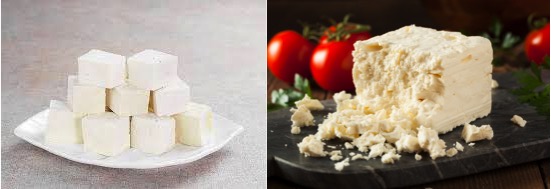Despite growing popularity of green diets and plant-based cooking, dairy consumption is still high in the United States. Last year, diary sales increased to $61 billion, a $7 billion increase from the year earlier, a Bloomberg report said. A new star is also emerging in the dairy scene in the US – India’s beloved paneer.
Although paneer has been around since the 1500s, its high protein and fat content has made it a favourite among those on keto diet, which as per the Bloomberg report, is a market valued at $9.5 billion in 2019. Its high melting point retains its shape when cooked, making it a good candidate for vegetarian dishes such as the famous saag paneer.
The increasing affinity to paneer also reflected in the web where “Indian restaurants near me” rose 350% last year on Google Trends and “Paneer maker” was up 140%.
In New York, Chintan Pandya, chef at the Unapologetic Foods, has raised the bar with his “light and incomprehensibly pillowy product” made with a blend of milk and cream from a dairy upstate. Pandya’s paneer is now a top seller at his Lower East Side restaurant, Dhamaka, where it’s grilled and topped with garam masala.
“A lot of people ask us what’s different, it’s just that we invest time and money in it,” Pandya was quoted by Bloomberg as saying.
Paneer’s versatility also allows chefs to explore cooking methods. Across the US, paneer is made into a variety of ways – smoked and served with charred corn, made with wine and served alongside caviar, and topped on pizzas.
A couple from San Fransico made a version of paneer that is different from the widespread commercial versions such as Nanak, made by Canada-based Punjab Milk Foods; Amul, based in Gujarat, India; and Mother Dairy, a wholly owned subsidiary of India’s National Dairy Development Board. Jasleen and Tarush Agarwal, former tech employees, started Sach Foods, which specializes in small-batch paneer, made with organic grass-fed milk from Holstein cows.
“Our growth is unique in the cheese world, especially during a global pandemic, when the normal ways of selling to new accounts don’t apply,” Tarush said. Jasleen and Tarush are ramping up production to five days a week-from two to three days-to start serving 1,000 stores in the first quarter of 2022.
In contrast, a recent Guardian report indicated that Indians, who have had paneer on a pedestal, are becoming more open to European cheeses. In urban middle-class households, demand for gourmet cheese platters has, in the words of one Delhi supplier, “gone ballistic” this year, according to the report.
While it certainly is difficult to access to dark, deep cellars to age their cheese, it is now possible to get fresh, Indian-made mozzarella, stracciatella, burrata, gruyère, stilton, halloumi, reblochon, comté, cheddar, feta and parmesan in cities and towns across India.
Sundaresan, the co-founder of Käse, the only artisan cheesemaker in the southern Indian city of Chennai, was surprised at the sudden rage in demand for pecorino cheese, partly because of a viral Instagram pasta dish. “This would have been unthinkable two years ago,” Sundaresan to the Guardian.
Although there is a surge in demand, cheesemakers struggle to find the right quality of milk, from grass-fed cows that have not been given any hormones. India’s lack of reliable cold chain also makes it difficult to transport fresh cheese.
Source : News18 Nov 18 2021

